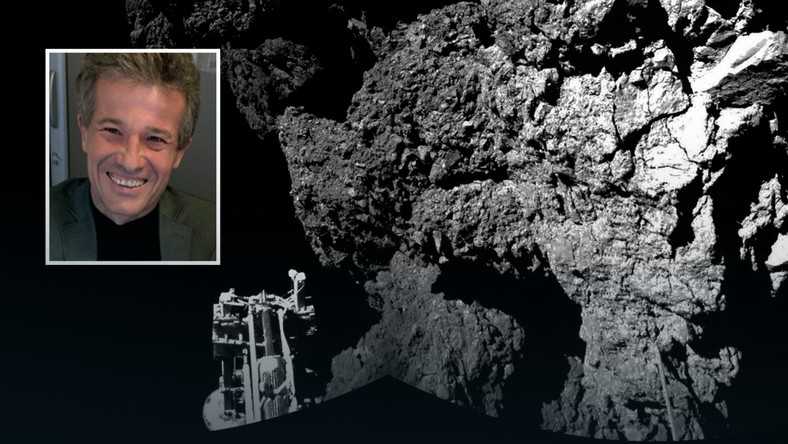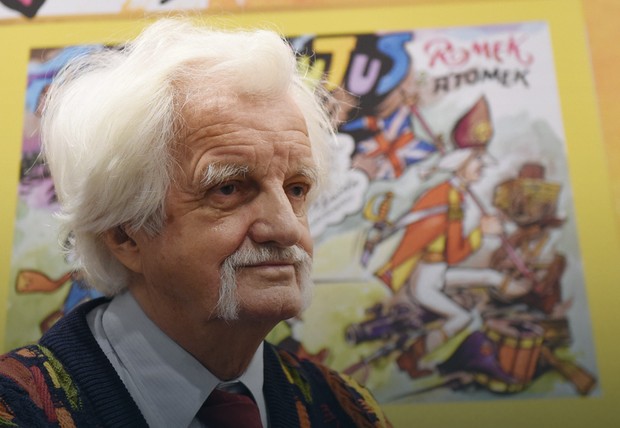
Photo: ESA
Arthur Bartlomiej Chmielewski
Bartlomiej Artur Chmielewski, or “ABC “was born in Warsaw, but emigrated to the United States to begin his studies. Cosmos has always been interested in. – I always wanted to work for NASA, especially since I learned that NASA exists. It was not easy, especially since the Communist government in Poland boasted only Russian space program – explains on the official website of the Rosetta project.
– I was excited about the possibility of studying in the US, because it approximates me to my dream job. When my advisor at the University of Michigan asked me, what interests me, I did not hesitate to say: “Space and robots.” “There is no work,” she said then. To prove it, he was wrong, I called every week to the Jet Propulsion Laboratory (Jet Propulsion Laboratory) to inquire about job opportunities, but to no avail. I had to change strategy – he added.
In the end, the experience gained at the summer practices at Ford Motor Company has allowed Chmielewski on work on electric car program at JPL. After the project was canceled, he moved to the department of space missions and gained experience in project Galileo, Ulysses and Cassini.
The Rosetta Project Manager acts. Is responsible for the space mission. Trying to ship to work as promised, within budget. The most important part of his job is to maintain a good flow of information between the teams.

Papcio Hops
– Spaceships are the result of the genius of many people from different areas. Scientists, engineers, electricians, engineers, thermal radiation, communication, security, computer and countless other people have to communicate well with each other, to document their work and stay focused on the end, despite the ups and downs – Chmielewski explains.
Despite the stressful job and a huge responsibility of ABC’s time for entertainment. When asked what he does to relax, says: – I love to teach children the game of tennis. Advanced tennis requires good shape, speed, technique, reflexes, endurance, but above all an intellectual discipline. It is a big challenge and a combination of all these elements (probably more difficult than building a space telescopes). Teaching my children how to play tennis and still be a loving dad at the same time, it is not a simple matter – he added.
And where did the funny nickname ABC? It turns out that this is due to his father, Henryk Jerzy Chmielewski. – My father is a famous Polish cartoonist. Since it is quite a funny guy, he decided to call me Arthur Bartholomew, so that my initials were, “ABC”. People still say to me: ABC. In the end, who would bother with “Chmielewski”? – Explains Pole.
Polish accent
Rosetta Mission for ten years implementing the European Space Agency (ESA). The probe was launched from Earth ten years ago – in 2004. At the beginning of August. reach the comet 67P / Churyumov-Gerasimenko and has since led her observations from close range. At the culmination of the mission – to embed on a comet lander Philae – eagerly awaited the scientists from the Space Research Centre (SRC), Polish Academy of Sciences, who put one of the lander’s two largest research instruments.
– We have built a tool that is a thermal probe. This penetrator, equipped with a device and thrusting rod with a length of approx. 40 cm. On it there are 16 thermal sensors, which are measure the temperature of the subsurface comet. Also determine its conductivity, so that you can learn eg. What is the porosity of the soil and is built like a comet – said one of the designers MUPUS Eng. George Grygorczuk Laboratory of Robotics and Mechatronics Satellite SRC PAS.
The total on board the lander is about 10 scientific equipment. Among them are the two biggest drill sampling and that Polish penetrator thermal MUPUS.
– Place knockout Polish probe into the ground comet is very carefully planned, because it is not possible to MUPUS hammering into the ground several times in different places. Driving the process can take anywhere from several minutes to several hours, depending on the hardness of the ground – described the PAP party.
– When I built the machine several years ago, no one could determine soil strength parameter of the comet with an accuracy of more than three rows. You could specify that it is a surface with the consistency of fluffy snow, or ice skawalony. Now, thanks to the progress of science, the strength of the soil can be determined with much greater accuracy – Grygorczuk said.
Few But missing to Polish research instrument was not created at all. – In Germany won the competition ESA, because count teams that were powerful finance for the project. However, thanks to various efforts and negotiations, we managed to enter the team. Germany proposed system penetrator driving miniature rocket engine, so we had to come up with something else. We came up with the idea of driving the penetrator using electromagnetic devices hammer. We did the first model and showed that this can effectively knock out the surface of the comet. After a year, we found that our system has so many followers that were finally selected our solution.
To go along with the Rosetta mission, MUPUS have to pass a series of endurance tests and overload. The equipment he had to withstand a rocket, then hit the lander. – The most difficult tests that MUPUS have to go, this thermal-vacuum tests. Consisted in the fact that schładzaliśmy device in a vacuum chamber to minus 160 deg. Celsius and we showed that the system works. Then, the temperature rose to RT, and then again have to demonstrate its performance. This cycle was repeated eight times – explained Grygorczuk.
He stressed that scientists waited ten years for the result of their work they had to demonstrate not any patience.
(MW)
No comments:
Post a Comment